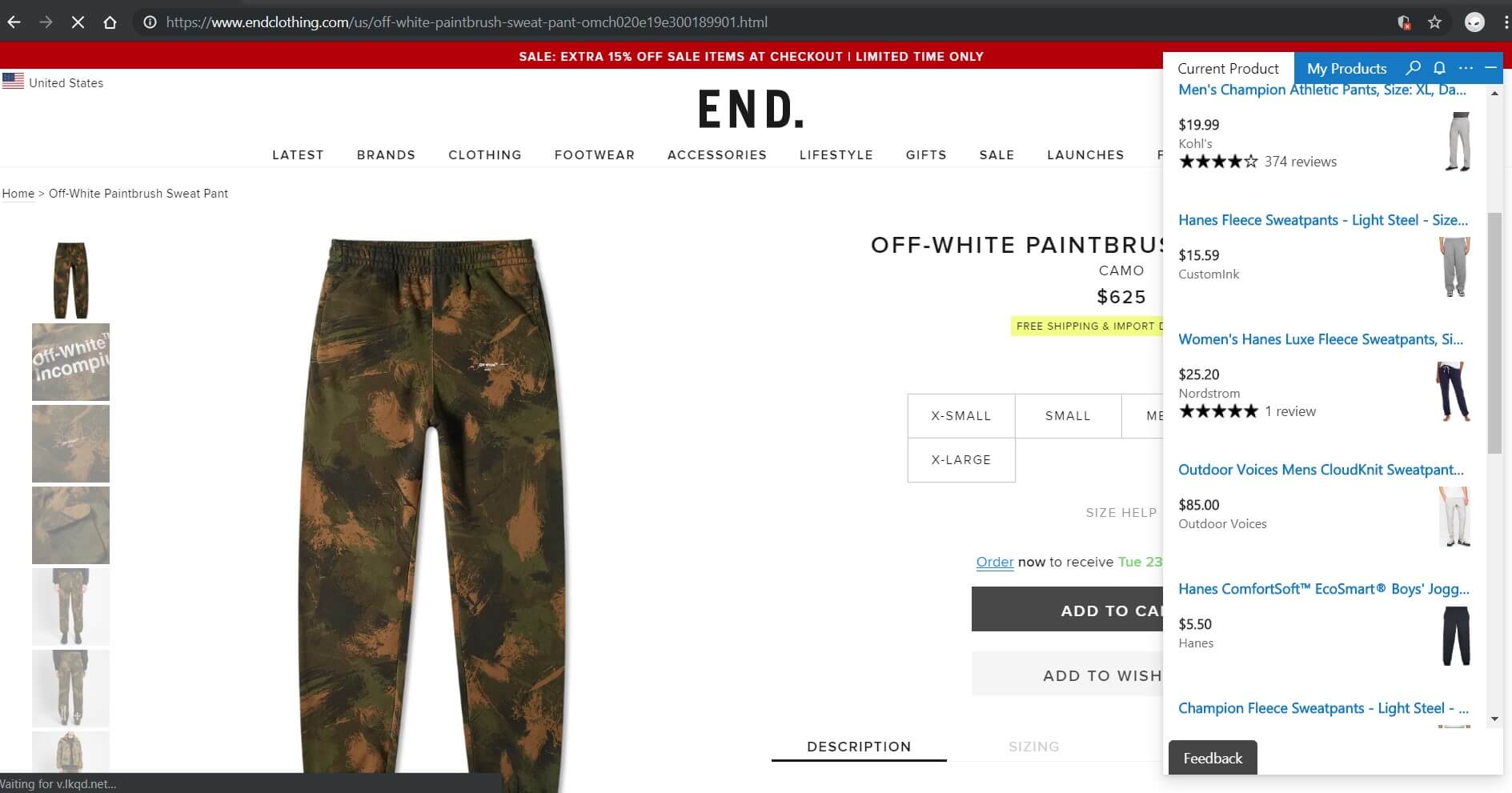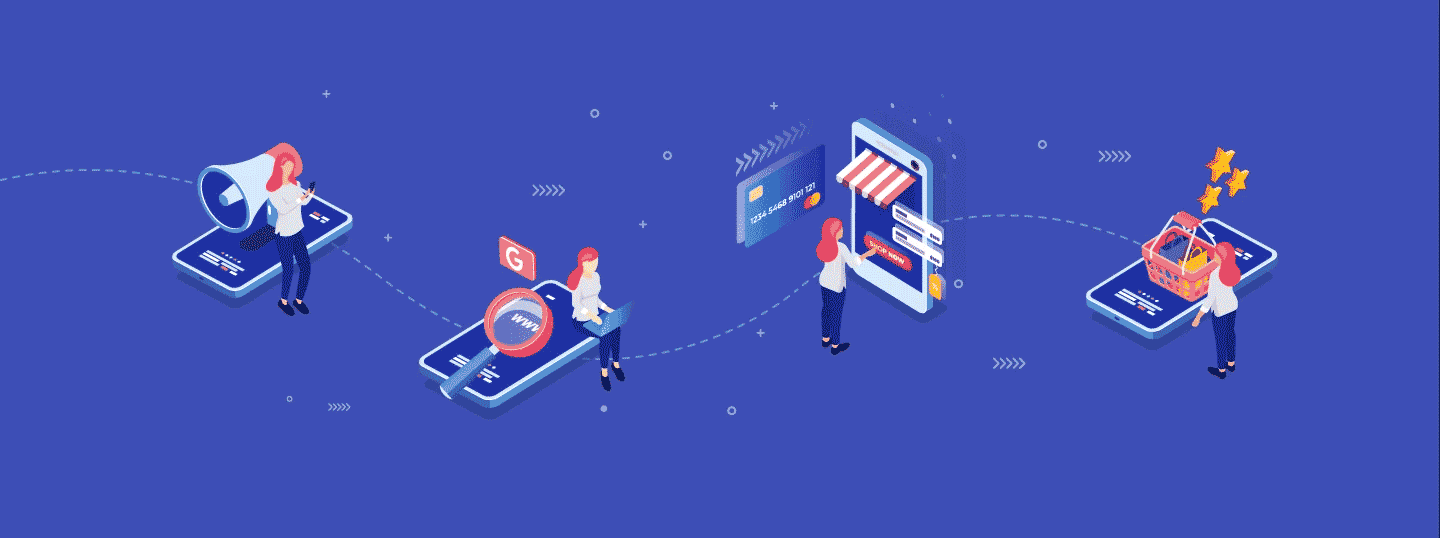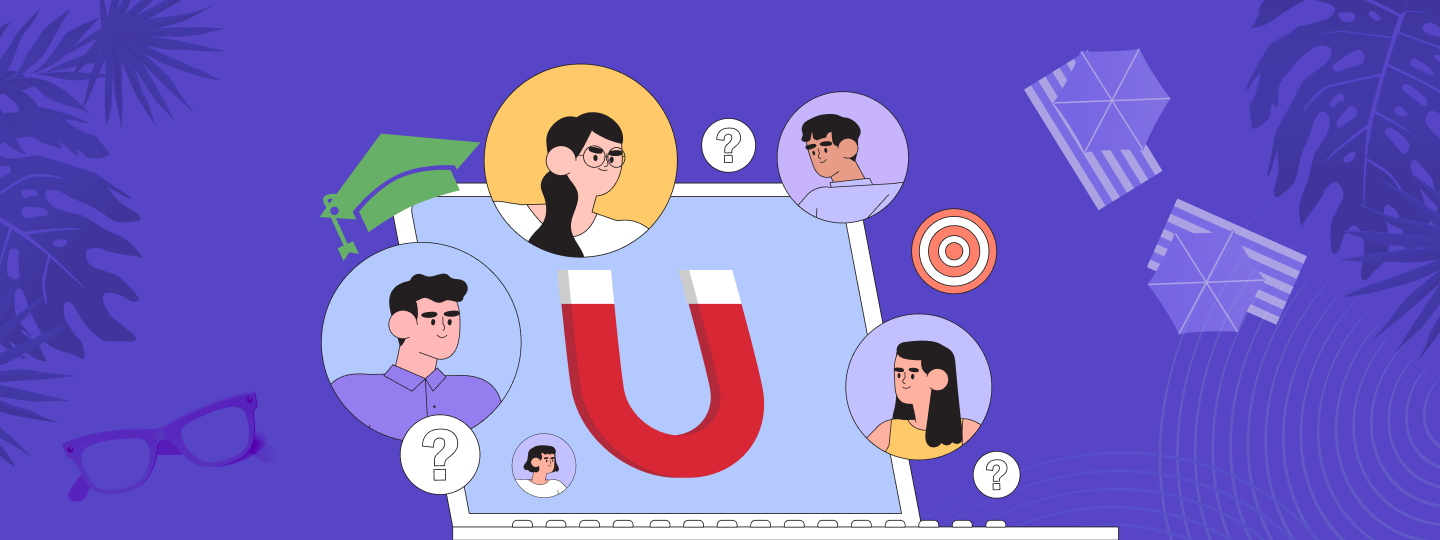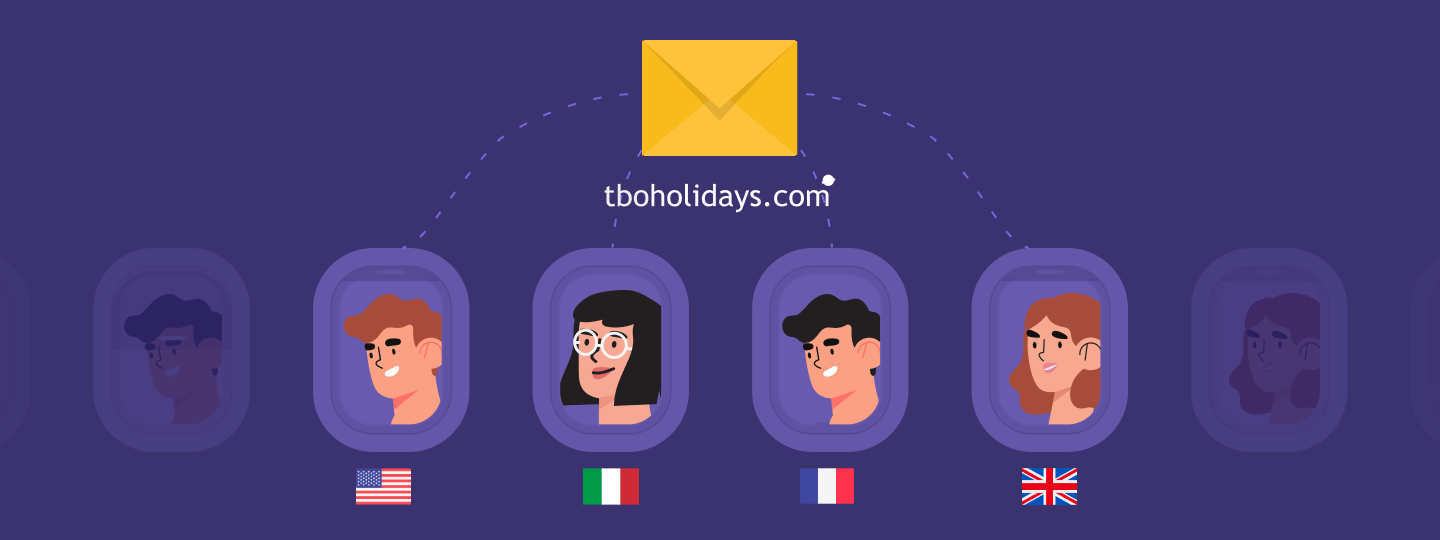According to Statista, eCommerce will make for 21.8% of the total global retail sales by 2024. The way it is getting easier for brands to take their products online and how consumers choose to make more purchases digitally, this number is all set to grow over the years.
Some of these brands have become a household name for us, while some are struggling to bring in their day to day sales. The difference between the two is usually just the online customer journey they offer to their consumers.
What is an online customer journey?
The customer journey refers to the path a consumer follows before making interaction with a brand until they convert into a customer. For instance, for an eCommerce business, it starts from the point a consumer starts searching for products that the brand sells, to the consumer discovering their brand, goes on to check out their products, wishlist-ing them or making a purchase.
Now that looks like a pretty standard funnel for customer acquisition. Right?
Wrong. Once the shopper lands on your store, their journey with a brand goes on a different tangent. Right from the look and feel of the store, how easy it is to find products, what the product descriptions look like, and more, every little detail starts to matter.
In this article, we’re sharing tactics that are used by global brands across the store to ensure a great online customer journey. Yes, we’re talking about the likes of Nine West, Kirkland’s, and others who have had a loyal, ever-growing customer base for years – no matter how much the competition!
How do you improve your online customer journey?
1. Prevent online customer journey hijacking
The very first thing you need to do to offer a great customer journey online is to prevent anything from hijacking it. That is, when a shopper reaches your store, they expect to explore your site and not be taken away from it.
Not sure what it means?
Brands like Puma noticed 11% of their traffic seeing competitor ads, price comparisons, video ads, and spam pop-ups on their online store. The worst part is that neither did they place them there, nor were they aware of it. These came from adware injected by browser extensions and web apps on the consumer side.
So while the brand thought their store was well optimized to offer a seamless online customer journey, the truth looked something like this:
These ads don’t aim at stealing data from your store. They only lure your shoppers away from the store to other sites. Moreover, as we all know, once a shopper leaves your store, there’s a high chance they’re not coming back.
The unauthorized ads break the natural flow of online shopping, and that’s what we call online customer journey hijacking.

Now it is impossible to monitor 12,000+ new adware strains every day. So they never know what their consumer sees on their browser, imitating the site’s design and luring them to other websites.
That’s where solutions like BrandLock come into play. The conversion optimization suite uses machine learning and works with a team of R&D experts to monitor adware strains proactively, removing them before they show up.
By merely removing distractions caused by these unauthorized ads, brands have seen an increase in their conversion rate by +16%. It only proves that how bettering the online customer journey increases conversions and sales for web and mobile stores.
2. Create immersive and interactive product pages
A big chunk of a brand’s online customer journey is spent on product pages. It’s only evident for a consumer to want to know more about a product they’re interested in. They want to be able to make an informed purchase as it saves the hassle of them having to exchange or return products. However, high-quality product images and the most well-crafted product descriptions are no longer enough!
Think about why you prefer to shop from brick and mortar stores sometimes – especially when you’re trying out products from a new brand. You get to touch and feel the product, and that reassures you that the purchase you make will be worth it.
What’s more, is that you always have an in-store salesperson who is more than willing to assist you.
Now you can’t offer the exact same experience to a shopper online. However, you can make your product pages more immersive and increase user engagement.
Use product videos and 3D model assets to add another dimension to your product page. While enterprise eCommerce businesses have been experimenting with immersive product pages for a while, even platforms like Shopify have introduced 3D models as a feature for merchants.

Solutions like WebRotate360 are already working with industry leaders like Bosch, Swarovski, and others to create interactive product pages.
However, that doesn’t mean you lose focus from the core elements like creating consistent product descriptions, FAQs, adding a clear call to action to buy the product and more.
3. Leverage gamification for higher customer engagement and conversions
Most eCommerce websites and apps have high bounce and exit rates. The reason being that a typical online store doesn’t really have anything new to offer.
For example, you visit an online store. You browse through products you’re interested in or the one product that you’re looking for. A cursory read through, and you exit the page if you’re looking at making the purchase later.
That’s a pretty standard behaviour for online shoppers, and that’s where you need to improvise.
To make this shopper interact with your brand, you need to create a unique customer experience for them.
This is where adding a little fun element to their online journey with your store comes in – gamification.
Gamification simply means using elements of a game in your conversion optimization strategy. This includes encouraging the shopper to play a game on your site before they leave, to win something valuable – say, a special discount!
Being targeted by a game instead of the usual email promotions where it’s a standard exchange of contact details and a discount increases the engagement level of the shopper. Increased engagement leads to higher conversions on the campaign, leading to more sales.
Ikonick, an online store that sells modern art canvases, used a simple game, lucky draw, to gamify their popup. By toggling cards, their shoppers could win significant discounts. The store didn’t just see greater participation in the game, but also the same shoppers making more purchases using those coupons thereafter!
The store saw a massive growth in its email list and the shoppers walked away with a sense of winning. What more could you call a great online customer journey?

4. Offer all the help you can
What makes shopping at brick and mortar stores easy? The help you get.
Whether you doubt the sizing or the material of a product you’re purchasing, you can simply ask a representative. It doesn’t just help the shopper make an informed purchase, but also reduce the returns and exchanges that come to your business.
Now you can’t physically be there beside the shopper. However, you definitely can offer help whenever they need it.
Using a live chat or a chatbot, you can be available to the shoppers browsing your mobile or web store, at any given time. They need to drop in a note if they feel confused and you could go on to engage them with the right content that helps them make a decision.

But this, too, doesn’t mean you need to have a customer support representative present 24/7. You can set up your online and offline hours to be transparent with your customers.
Alternatively, you could consider implementing chatbots. Even when your representatives are not online, you can still engage confused shoppers by letting the bots address the FAQs. Things as small as having a size guide sent on time have a massive impact on the customer’s journey with an online store.
Here’s Kate Spade offering help to a shopper who’s confused about a handbag. The representative’s timely opinion with a personalized approach nudges the shopper to see value in the product and complete the purchase.

5. Leverage the recommendation engine
While the store has improved a lot in terms of functionality, Amazon has never been the one to focus too much on the look and feel. And yet you see so many shoppers go back to the store to make repeat purchases. How did Amazon offer such a great customer journey that built them a loyal audience?
Their recommendation engine.
Yes, we’re talking about the products you see on the homepage when you revisit Amazon. The store takes note of your preferences and previous interactions, making product recommendations based on that. The high relevance and context is what always wins them more sales!

When 80% of shoppers are more likely to purchase from online stores that offer a personalized experience, it’s pretty obvious why the eCommerce giant focuses so much on their recommendation engine.
However, that too is something you need to improve to better the customer journey created. That’s why recommendation engines use three types of filtering:
1. Collaborative
- Item-item filtering: The engine finds items that have common features. For example, if the shopper bought a bookshelf, the system will recommend bookends to them on their next visit.
- User-user filtering: If a shopper is looking for football shoes and socks, and another one likes football shoes and shorts, the engine basically recommends the first shopper shorts and the second one socks, based on user preference matching.
2. Content based
In this, the recommendation engine builds out shopper profiles based on what they have wishlisted, liked, or purchased. It then uses that data to recommend similar products to them from different brands.
3. Hybrid filtering
In this kind of filtering, the engine uses both content and collaborative approaches. Matching behavioural data, user intent data, and item data, the store can recommend products that are closer to the shopper’s preference. It’s what you see on Netflix!
Simply put, a recommendation engine improves a customer’s online journey by helping them discover more products. In turn, it helps your store enhance the discoverability of product ranges and also increase the average order value.
Why should you pay attention to the customer journey?
Every consumer is different. They have different search patterns and they interact with brands in different ways across different channels.
Every consumer is different and interacts differently across channels. Share on XCustomer A could have discovered your products on their Facebook feed. After interacting with a post or two, they could have decided to finally check out your online store or install your app. Seeing the deals you offer, this shopper could have made the purchase on their first visit itself. But customer B is not bound to do the same!
This online shopper could have searched for specific products based on their needs on the search engine. They could have discovered your brand in one of the search results, visited your site or mobile app and not converted until they were retargeted with ads a few times.
So you never know how a shopper chooses to interact with your store – but they do expect the same level of app or website personalization and a seamless shopping experience. That’s why you need to focus on understanding the online customer journey. That’s why you need to focus on understanding the online customer journey.
Here’s why top-grossing online brands keep the customer journey at the centre of their growth strategy:
1. It helps them identify popular customer touchpoints
In a digital landscape that is growing by the day, brands are pressured to be present wherever their customers are. This might require them to be active across different social media platforms. But understanding which channel shoppers naturally choose to interact with a brand can be difficult. That’s where mapping the customer journey comes into play.
You can identify channels that are commonly used by shoppers and then focus your efforts on being present there.
2. It helps recognize high-converting channels
You could be driving in traffic from different platforms. But driving traffic isn’t the end goal for your online store. It is important to convert these visitors into customers or at least nudge them to make an interaction with your brand.
When you map the customer journey, you’re able to identify which channels are driving in traffic that tend to convert more. This way you can optimize the journey of the customer from that platform to your store and eventually making a purchase, with lesser dropouts.
3. It helps segment customers based on behaviour
Knowing your customer has become very important today. The behaviour of your customer is different on your app than on a website. The reason being a mobile app is handy than a website. With thousands of online stores targeting the same market with deals and discounts, you need to know what would make a shopper want to purchase from you.
This requires you to not just look into your store’s web or mobile data, but also how the online shopper has been interacting with your brand over time. The customer journey helps you take note of what makes a customer purchase from your store or what makes him drop off. This enables you to optimize their journey for lesser chances of cart abandonment.
Was it a deal you offered while retargeting or a reminder you sent? You can segment your customers into categories like discount-seekers, cart abandoners, full-price shoppers and more.
With apps like RevTap, Little Data and others, doing so is easier. All you need to do is connect your online store and analytics apps to be able to generate actionable reports and customer segments.
4. It helps understand what products customers are looking for
As market trends change, it is difficult to keep track of what consumers are really looking for. Add to that the complexity of identifying how the consumer wants to keep track of trends and how they choose to interact with the brand, and you’ll only end up taking in inventory that doesn’t get sold and losing money.
When you’re mapping the customer journey, you understand where these shoppers get inspired from. It helps you identify what drives their need to make a purchase, predict what they’re looking for and plan your inventory better for maximizing profits.
Definitely seems like something every online store should use, right?
Your customer’s online journey is important.
While having things like a faster checkout are still important, the modern shopper wants more. They want to feel valued. They want online brands to understand what they’re looking for and personalize their journey similar to that at a brick and mortar store.
So if you’re not focusing on the customer’s online journey, you can be sure that your competitor will!


































 Prakhya Nair
Prakhya Nair

 Dev Iyer
Dev Iyer